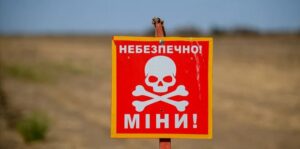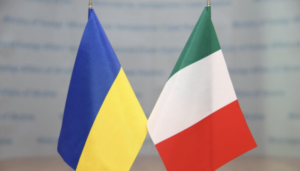
Italy is one of the most attractive countries in Europe for buying real estate. Its favorable climate, rich history, developed infrastructure, and high standard of living attract both investors and those looking for a second home on the coast or in a picturesque village. But before buying, it is important to understand the tax system: in Italy, property taxes depend on many factors, from the location of the property to the status of the owner.
Main property taxes in Italy
The Italian tax system for real estate includes both one-time taxes on purchase and annual taxes on ownership.
IMU (Imposta Municipale Unica) — municipal property tax
The IMU rate is set by local authorities and ranges from 0.46% to 1.06% of the cadastral value of the property.
The basis for calculation is the cadastral value (rendita catastale) multiplied by an adjustment coefficient (usually 160 or 168), after which the rate is applied.
When buying from a private individual:
2% of the cadastral value — if it is the primary residence for a resident buyer.
9% — if it is a secondary or investment property.
When buying from a developer:
10% VAT, plus fixed registration fees (€200 each).
Cadastral and mortgage fees are also payable — €50 each.
Special features for non-residents
Foreigners are free to buy real estate in Italy. However, there are several important nuances:
If you are not registered as a resident, IMU tax is levied even on a single property.
Property status is determined not by citizenship, but by registration with the municipality (residenza anagrafica).
If the property is rented out, the rental income is subject to mandatory declaration and taxation:
under the simplified cedolare secca scheme — 21%,
or at a progressive income tax rate: from 23% to 43%.
Calculation examples
An apartment in Rome purchased by a German citizen for vacation purposes:
Cadastral value: €80,000
IMU at a rate of 1%: approximately €1,280 per year
House in Tuscany, rented out:
IMU + TARI: from €1,500 to €2,000 per year
Plus tax on rental income: 21% or according to the scale.
Conclusion
The Italian tax system for real estate requires attention and calculations. The main annual expenses are IMU and TARI, and when purchasing, there are significant one-time fees. In the case of rental or resale, there are additional taxes on income. Therefore, before signing a contract, it is recommended to consult with an Italian lawyer or accountant to avoid surprises and fines.
Source: http://relocation.com.ua/property-taxes-in-italy-analysis-by-relocation/

Italy’s economy in 2025 is showing moderate growth amid structural problems and external economic challenges. Despite positive trends at the beginning of the year, the outlook for the rest of the year remains uncertain.
Key macroeconomic indicators for 2025
GDP growth: According to the European Commission’s forecast, GDP is expected to increase by 1.0% in 2025.
Inflation: Inflation is expected to rise moderately to 2.3%.
Unemployment rate: Unemployment is expected to fall to 7.7%.
Budget deficit: The deficit is projected to narrow to 3.3% of GDP.
Public debt: Public debt is expected to rise to 137.8% of GDP by 2026.
Economic dynamics in January-April 2025
Industrial production: In March 2025, industrial production increased by 0.1% compared to February, which is below the expected growth of 0.5%. In annual terms, production fell by 1.8%, continuing the downward trend for 26 months.
GDP growth in Q1: Italy’s economy grew by 0.3% in the first quarter of 2025, slightly exceeding analysts’ expectations. Factors supporting the economy
Domestic demand: Private consumption is expected to strengthen, becoming the main driver of economic growth in 2025.
Fiscal policy: The Italian government has approved a budget for 2025 that includes tax breaks for families and deficit reduction, which should stimulate economic activity.
Risks and challenges
External factors: Potential trade tensions, particularly with the US, could negatively affect exports and overall economic growth.
Structural problems: High public debt and the need for structural reforms remain key challenges for the Italian economy.
Forecast for the end of 2025
GDP growth: Growth of around 1.0% is expected, with domestic demand remaining the main driver.
Inflation: Inflation is expected to remain at 2.3%, in line with the European Central Bank’s target.
Unemployment: The unemployment rate is projected to decline to 7.7%, reflecting a gradual improvement in the labor market.
Thus, despite the existing challenges, Italy’s economy is showing signs of stabilization in 2025, supported by domestic demand and government support measures. However, further structural reforms and the effective use of available resources are necessary to ensure sustainable growth.

On Thursday, in the presence of Ukraine’s Minister of Agrarian Policy and Food Vitaliy Koval, Italian Ambassador to Ukraine Carlo Formosa signed an agreement with the International Center for Advanced Mediterranean Agronomic Research in Bari (CIHEAM) to launch the €9 million Pro.UKR project.
The Italian embassy toldInterfax-Ukraine that the agreement aims to promote sustainable agricultural development and food security in the agricultural areas of Odesa region.
The project, which will strengthen the production, technical and organizational capacities of local agricultural producers, livestock enterprises and cooperatives, will be fully implemented in Odesa, a city over which Italy has taken patronage for recovery, demonstrating Italy’s commitment to one of the regions most affected by the war. The program, developed jointly with the Ministry of Agrarian Policy and Food of Ukraine and technical experts from Odesa Oblast, will include the provision of tools for production in the fields of agriculture and livestock, the introduction of new technologies and sustainable irrigation systems.
“The agri-food sector is one of the key components for Ukraine’s economic recovery, particularly in the agricultural areas where small businesses have been particularly hard hit by the conflict. Italy reaffirms its support through a concrete project aimed at strengthening food security and promoting sustainable agricultural development,” said Ambassador Formosa.
The Pro.UKR program is part of a broader effort by Italy to support the recovery of Ukraine and the Odesa region, with the aim of contributing to the country’s economic and social resilience in the current difficult environment.

The Italian Agency for Cooperation Development (AICS) has announced a grant competition for land clearance from mines and other remnants of war in the frontline regions with a total budget of EUR 6 million, with the amount of one project not exceeding EUR 1.8 million.
As reported on the website of the Ministry of Economy of Ukraine on Thursday, the projects should be aimed at non-technical and/or technical survey of the territories, and include an element of informing the population about mine threats. Kharkiv region, where 55 out of 56 communities have been affected by the war, has been chosen as a priority for the implementation of projects within the competition.
“This is the first time that one of the partner countries has allocated money directly for the clearance of our land, involving Ukrainian mine action operators in this process. I believe that such cooperation will allow us to quickly return to use and identify contaminated areas and strengthen cooperation not only at the level of institutions, but also between organizations and companies of our countries that strive to make Ukrainian land safer,” said Yulia Svyrydenko, First Vice Prime Minister of Ukraine and Minister of Economy of Ukraine.
Only non-profit organizations can apply for the competition, but they can also engage commercial mine action operators as partners in project implementation.
Applications will be accepted until May 11 this year. The total planned duration of the projects is up to 15 months.

Italy and Spain have made it clear that they are not ready to support the European Union’s proposal to allocate around EUR 40 billion in military aid to Ukraine this year, with each country contributing according to the size of its economy, Reuters reported on Tuesday.
Following a meeting on Monday of foreign ministers from the 27 EU member states in Brussels, Kallas said her proposal had “broad political support” and discussions were now moving to the details.
Diplomats said the proposal has some support from northern and eastern European countries. But some southern European capitals were more reticent, reflecting a division between those geographically closer to Russia, which have given more aid to Ukraine, and those farther away, which have given less, as a percentage of their economies.
According to the Kiel Institute for the World Economy think tank, Estonia, Denmark and Lithuania lead Europe in this area, allocating more than 2 percent of their GDP to aid Kiev between January 2022 and December 2024. At the same time, Italy, Slovenia, Spain, Portugal, Greece and Cyprus are among those who have allocated the least, committing less than 0.5% of their GDP.
Speaking ahead of the meeting, ministers from Italy and Spain – the EU’s third and fourth largest economies – said it was too early to take a final position on the proposal.
Italian Foreign Minister Antonio Tajani said the proposal would need to be discussed in detail in light of upcoming events. “We are waiting for a phone call between Trump and Putin to see if there will be any steps forward to achieve a ceasefire,” he said, adding that Italy must also find money to increase its own defense spending. “There are many expenses that need to be addressed,” he added.
Spanish Foreign Minister Jose Manuel Albares said: “We will see how the debate goes, but there is no decision on this issue yet.”
Albares said Spain had already pledged 1 billion euros in military aid to Ukraine this year. He said Madrid did not have to “wait for the High Representative (Callas – IF-U) to make any proposal” to show that Kiev could count on his support.

Italy will join the processes of Ukraine’s reconstruction, in particular the restoration of the energy sector, says Italian Deputy Prime Minister and Foreign Minister Antonio Tajani.
“There can’t be negotiations without Ukraine and without Europe. It is impossible to agree on an agreement without Ukraine and without Europe…. Peace must come together with strong security guarantees for Ukraine,” he said on Monday in Kiev, speaking at a plenary session of the ‘Support Ukraine’ program.
According to Tajani, peace must be stable and lasting for Ukraine, and Italy would be happy to discuss Ukraine’s future. “Rebuilding, rebuilding, trade. We want tourists to visit Ukrainian cities and Ukrainians to visit our universities and our cities. We will participate in the rebuilding process,” he emphasized.
According to the Deputy Prime Minister, Italy, in particular, will join the restoration of the energy sector.
“We are organizing an international conference on reconstruction. It will be held in Rome on July 10-11 this year. We want to organize what will be a huge success for Ukraine,” Tajani informed.